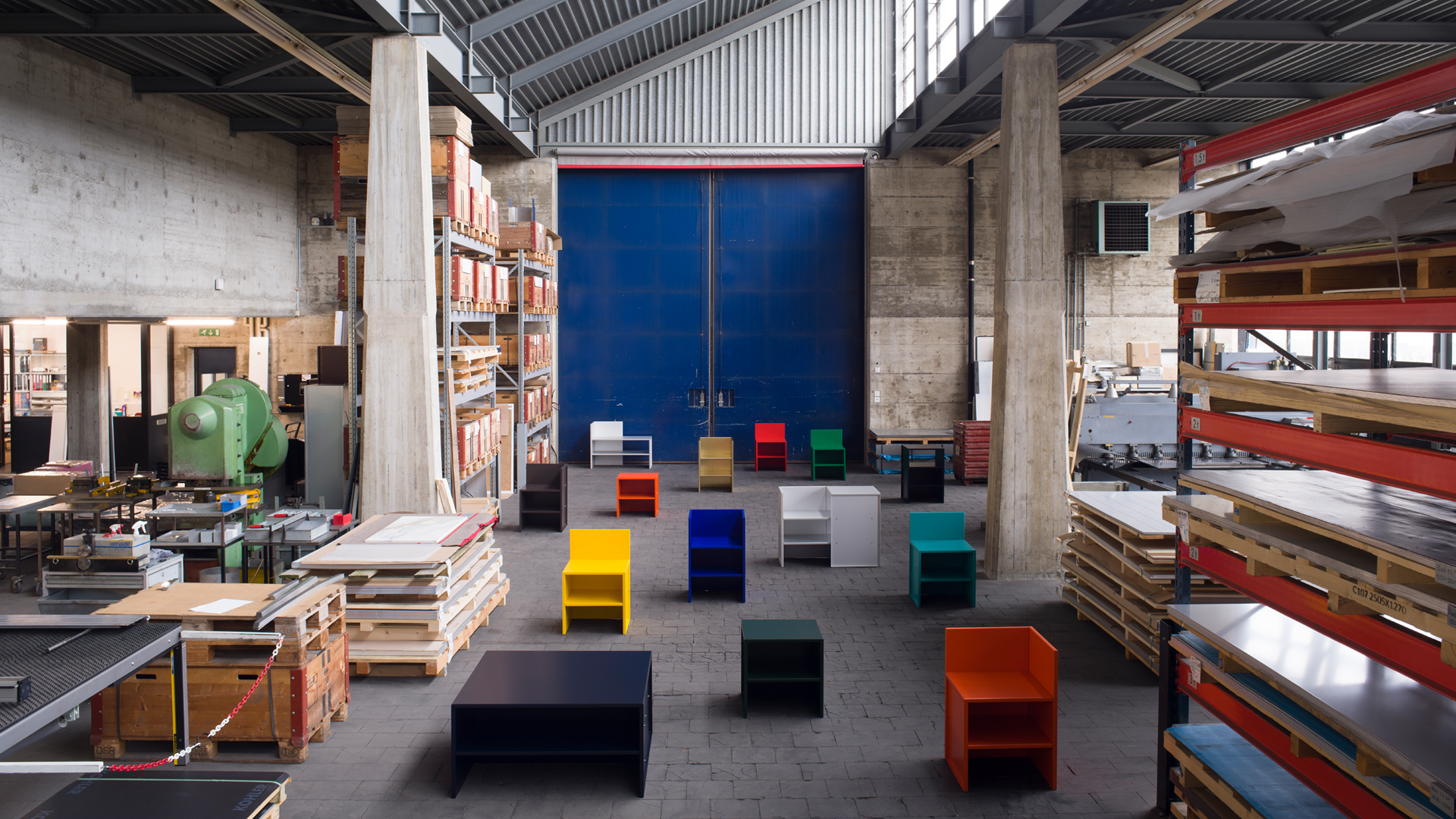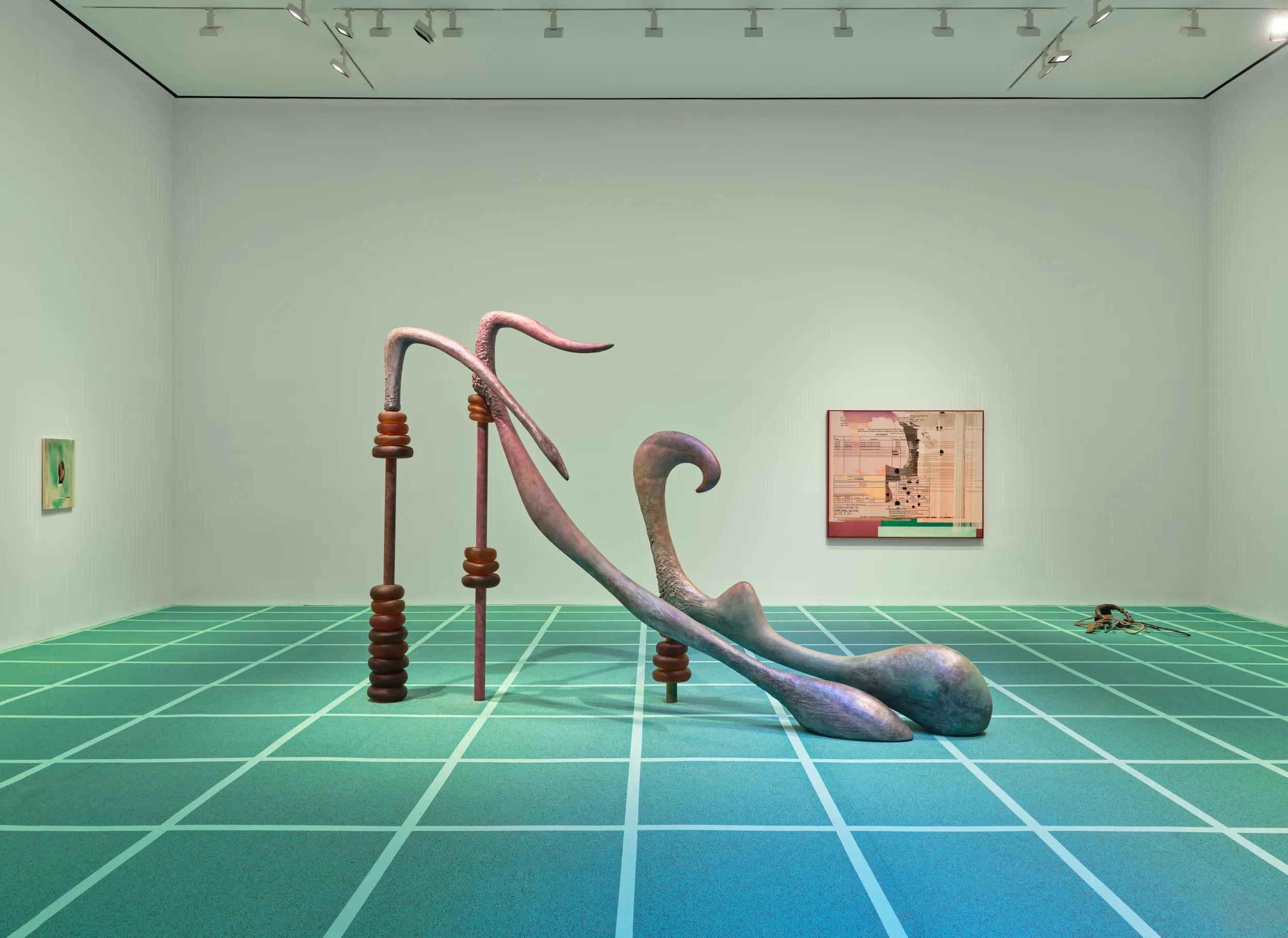
Mike Kelley
Memory Ware
3 November - 23 December 2016
New York, 69th Street
Beginning 3 November, Hauser & Wirth will present ‘Memory Ware’, the first exhibition since 2001 devoted exclusively to both the two- and three-dimensional works from the celebrated series of the same name by the late Los Angeles artist Mike Kelley (1954 – 2012). Over the course of his influential four-decade career, Kelley generated a remarkably diverse oeuvre in an array of mediums, conflating high and low culture, critiquing prevailing aesthetic conventions and colliding the sacred with the profane. Comprised of some 100 Memory Wares and associated works made between 2000 and 2010, the Memory Ware series occupies a prominent place in Kelley’s materially and conceptually complex output. It includes two- and three-dimensional pieces: wall works known as Memory Ware Flats and freestanding sculptures. The exhibition at Hauser & Wirth will showcase almost two dozen Memory Ware works, most on loan from museums and significant international private collections.
On view through 23 December, ‘Memory Ware’ will coincide with the release of the first ever book to document Kelley’s entire Memory Ware series. This volume, published by Hauser & Wirth Publishers in association with the Mike Kelley Foundation for the Arts, features an essay by Ralph Rugoff, Director of the Hayward Gallery, London, offering a fresh analysis of the Memory Ware series and its position within Kelley’s practice.
Ralph Rugoff on Mike Kelley’s Memory Ware Series Mike Kelley’s Memory Ware series embodies the thematic engagement with memory-related concerns that informed the second half of the artist’s career. Beginning with such projects as Educational Complex (1995), a model conflating his recollections of the design of his childhood home and every school he attended, and Categorical Imperative (1999), a sprawling installation that re-contextualized leftover production materials from 20 years of art-making, Kelley devoted himself to exploring conventions of remembering, representing, and reconstructing the past. Fuelled by a deeply felt antipathy toward nostalgia, and incorporating references to personal, folk, and collective histories, these works were formally realized in ways that evoked tropes of modernist aesthetic practice and theory, while critically reflecting on the criteria and categories through which recent art historical memory has been forged.
Kelley borrowed the phrase ‘memory ware’ from a type of folk art popular in black communities of the American South and in Victorian Britain, in which the surfaces of common household vessels – bottles, vases, lamps – are covered with such small personal items and keepsakes as keys, buttons, shells, and beads in a matrix of clay. Kelley first encountered examples of the genre at a Toronto antiques fair in 2000, where he purchased a memory ware bottle. Given his existing interest in remembrance and in re-purposing materials with prior histories, as well as his long-term engagement with the aesthetics of craft and folk art, Kelley recognized in this find the possibilities for developing new works that deployed the memory ware aesthetic towards very different ends.
At first glance, the Memory Ware project would appear to be an anomaly in Kelley’s oeuvre. In place of the caustic wit and satirical orientation that characterized much of his output, the Memory Ware Flats in particular appear to emphasize decorative surface effects and to maintain a content-neutral demeanor. But the borrowed aesthetic Kelley deployed in the series is best understood as part of a labyrinth in which intricate paths of ideas and allusions intersect and circle back upon one another. In making the Memory Ware sculptures and paintings, Kelley elaborated on artistic strategies he had developed throughout his career: contrasting and playing with conventions to reveal their role in generating and framing different meanings, and cross-wiring readymade categories to confound our expectations. Underlying his approach was a deeply felt opposition to any idealist assertion that objects – including works of art – have inherent significance or value. Instead, Kelley’s Memory Wares reveal that, as philosopher Slavoj Žižek has observed, in different contexts ‘the same object can function successively as a disgusting reject and as a sublime, charismatic apparition; the difference, strictly structural, does not pertain to the ‘effective properties’ of the object, but only to its place in the symbolic order.’
Kelley’s Memory Ware project can also be understood as an extended chapter in the artist’s long engagement with reusing, repurposing, and re-contextualizing materials and ideas, including those associated with his own earlier production. In this respect, the Memory Ware series provides extraordinary evidence of Kelley’s efforts to destabilize or subvert the historical reception, remembrance, and memorialization of his own work. With the Memory Ware series, he invites the viewer to reflect upon the ways in which art’s meaning is always in play. As it comes to be seen within new contexts and different historical frameworks, an artist’s oeuvre will inevitably change and evolve in our minds’ eyes.
Installation views


Related Content
About the Artist

Mike Kelley
Mike Kelley is widely considered one of the most influential artists of our time. Originally from a suburb outside of Detroit, Kelley attended the University of Michigan, Ann Arbor, before moving to Southern California in 1976 to study at California Institute of the Arts from which he received an MFA in 1978. The city of Los Angeles became his adopted home and the site of his prolific art practice. In much of his work, Kelley drew from a wide spectrum of high and low culture, and was known to scour flea markets for America’s cast-offs and leftovers. Mining the banal objects of everyday life, Kelley elevated these materials to question and dismantle Western conceptions of contemporary art and culture.
Starting out in the late 1970s, Kelley became known for performance and installation based works; he came to prominence in the 1980s with a series of sculptures composed of common craft materials and stuffed animals. His work later widened in scope and physical scale, exemplified by ‘Educational Complex’ (1995), the ‘Kandors’ series (1999 – 2011), ‘Extracurricular Activity Projective Reconstruction’ series (2000 – 2011), and the posthumously completed public work ‘Mobile Homestead’ (2006 – 2013). These projects invoked a vast range of media and forms, illustrating the artist's versatility and underscored a number of Kelley's recurrent themes, such as repressed memory, sexuality, adolescence, class, and Americana, which were central to his artistic praxis. Throughout his career, Kelley also worked on curatorial projects, collaborated with many artists and musicians, and produced a formidable body of critical and creative writing.
Current Exhibitions
1 / 12



















